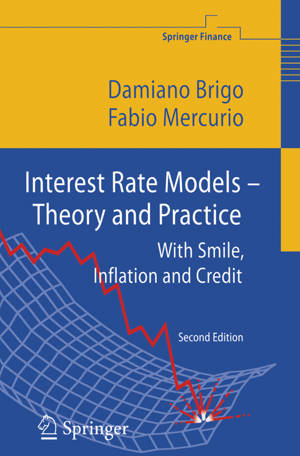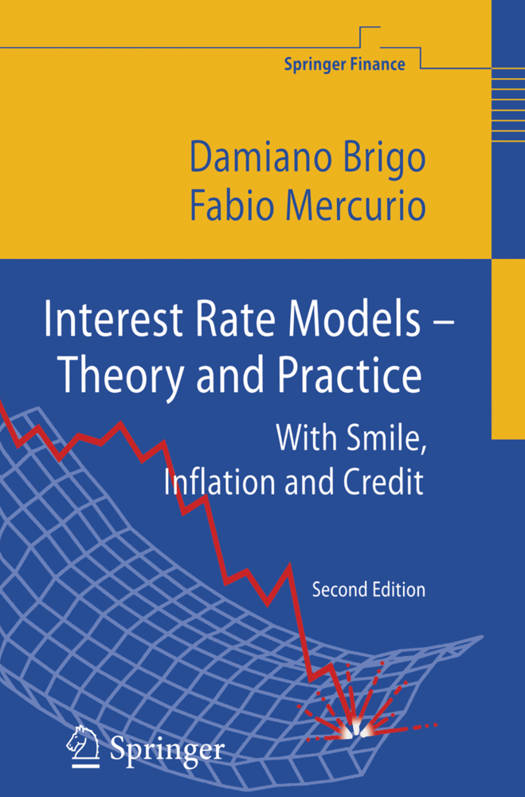
- Retrait gratuit dans votre magasin Club
- 7.000.000 titres dans notre catalogue
- Payer en toute sécurité
- Toujours un magasin près de chez vous
- Retrait gratuit dans votre magasin Club
- 7.000.0000 titres dans notre catalogue
- Payer en toute sécurité
- Toujours un magasin près de chez vous
Interest Rate Models - Theory and Practice
With Smile, Inflation and Credit
Damiano Brigo, Fabio MercurioDescription
When implementing mathematical models for pricing interest rate derivatives one must address a number of practical issues such as the choice of a satisfactory model, the calibration to market data, the implementation of efficient routines, and so on. This book explains how models work and how to implement them for concrete pricing.
The 2nd edition of this successful book has several new features. The calibration discussion of the basic LIBOR market model has been enriched considerably, a discussion of historical estimation of the instantaneous correlation matrix and of rank reduction has been added, and a LIBOR-model consistent swaption-volatility interpolation technique has been introduced.
The old sections devoted to the smile issue in the LIBOR market model have been enlarged into a new chapter. New sections on local-volatility dynamics, and on stochastic volatility models have been added, with a thorough treatment of the recently developed uncertain-volatility approach.
The fast-growing interest for hybrid products has led to a new chapter, with a special focus devoted to the pricing of convertible bonds and inflation-linked derivatives.
Spécifications
Parties prenantes
- Auteur(s) :
- Editeur:
Contenu
- Nombre de pages :
- 982
- Langue:
- Anglais
- Collection :
Caractéristiques
- EAN:
- 9783662517437
- Date de parution :
- 23-10-16
- Format:
- Livre broché
- Format numérique:
- Trade paperback (VS)
- Dimensions :
- 156 mm x 234 mm
- Poids :
- 1424 g

Les avis
Nous publions uniquement les avis qui respectent les conditions requises. Consultez nos conditions pour les avis.






